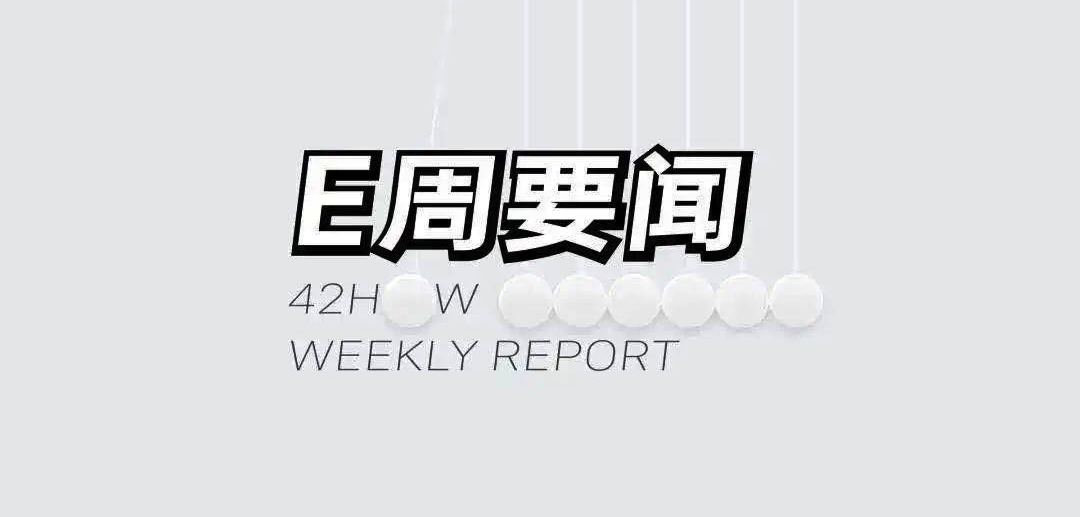Weekly Index
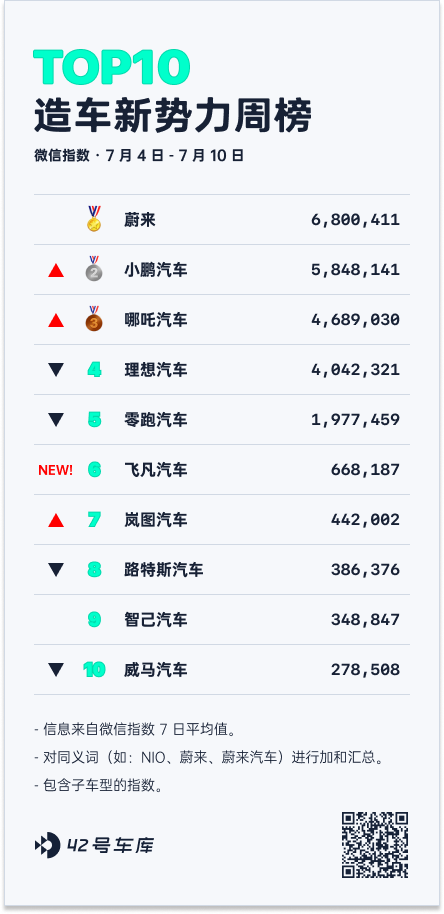
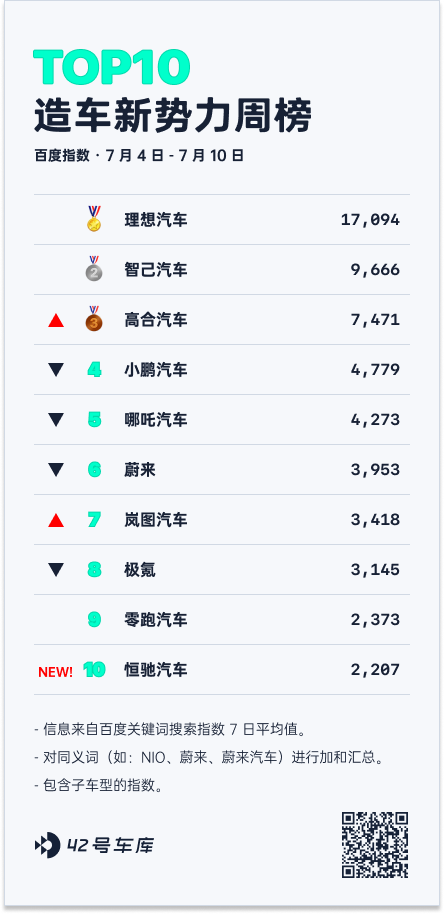
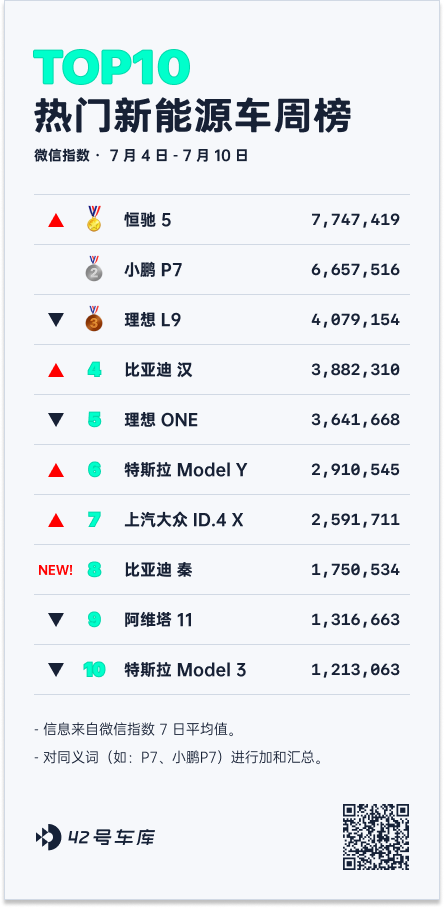
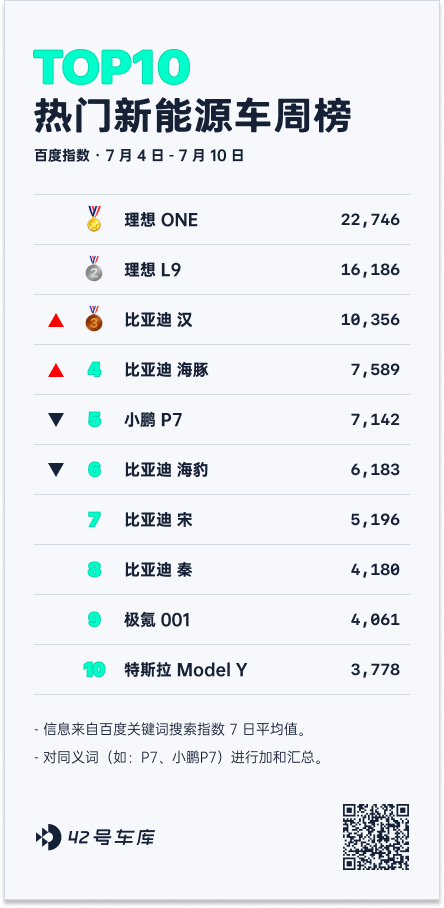
Weekly News
NIO Announces NIO Power 2025 Plan
On July 6, 2022, the NIO Power Day was held by NIO to mark the commissioning of its 1,000th battery-swapping station, located on Cijuelin Road, in Lhasa, Tibet. Additionally, 11 new swapping stations were also put into operation across the country on the same day, bringing the total number of stations in China to 1,011.
To celebrate this milestone, NIO shared its vision of building a supplemental energy system and revealed its future plans for NIO Power during the event. Following tradition, Qin Lihong, CEO of NIO, introduced and reviewed the accomplishments that NIO Power has achieved over the past four years as the NIO Power Day 2022 opened.Below is the English Markdown text:
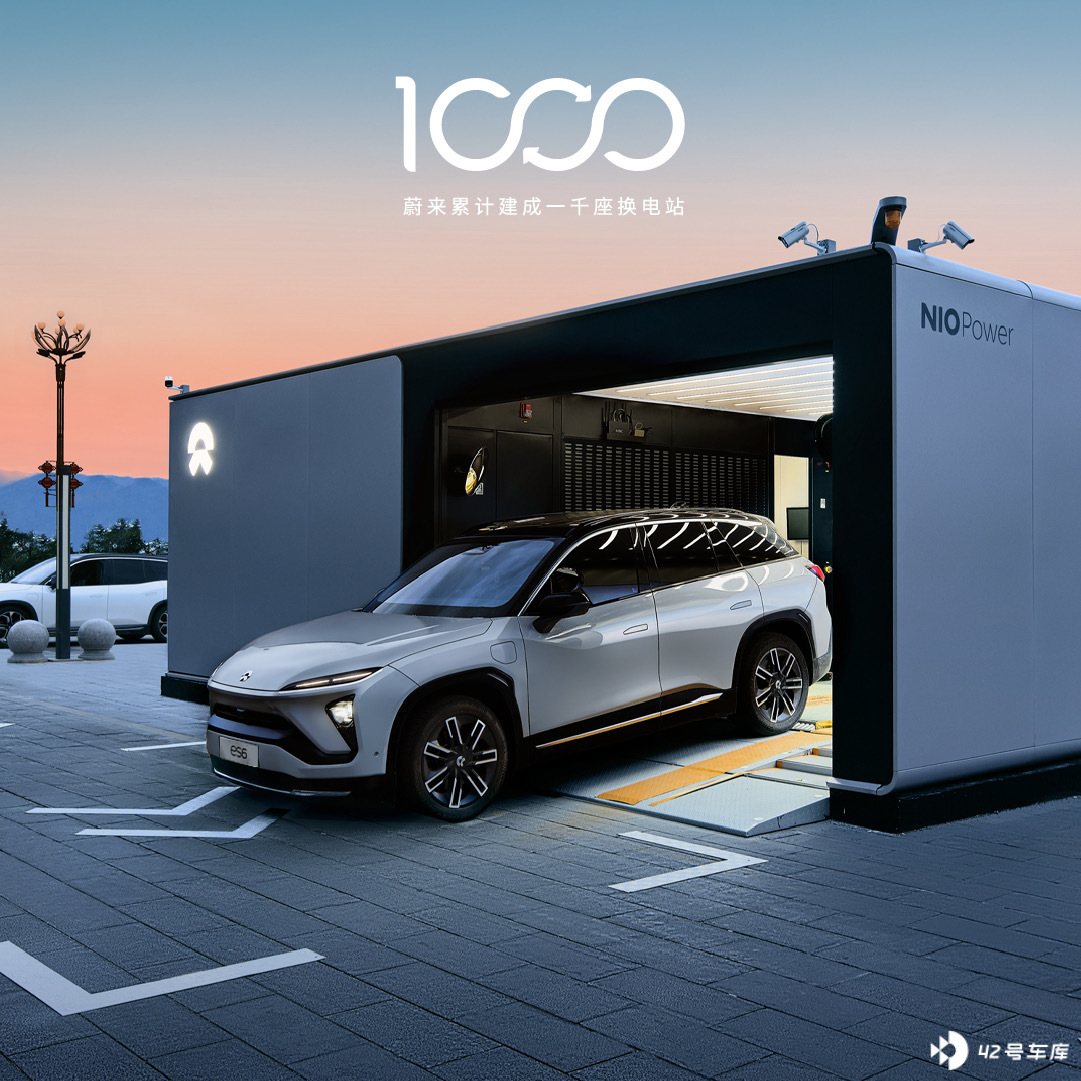
As of July 6th, 2022, NIO has built 1,011 battery swapping stations. These over 1,000 stations are spread across all of China’s provincial-level administrative regions, with a daily average of 30,000 swaps, exceeding a total of 10,049,462 swaps. The national coverage rate of “Power Areas” has reached 62.1\%, with 821,350 instances of one-click charging and 127,528 home charging installations. NIO currently has 9,603 externally available charging piles.
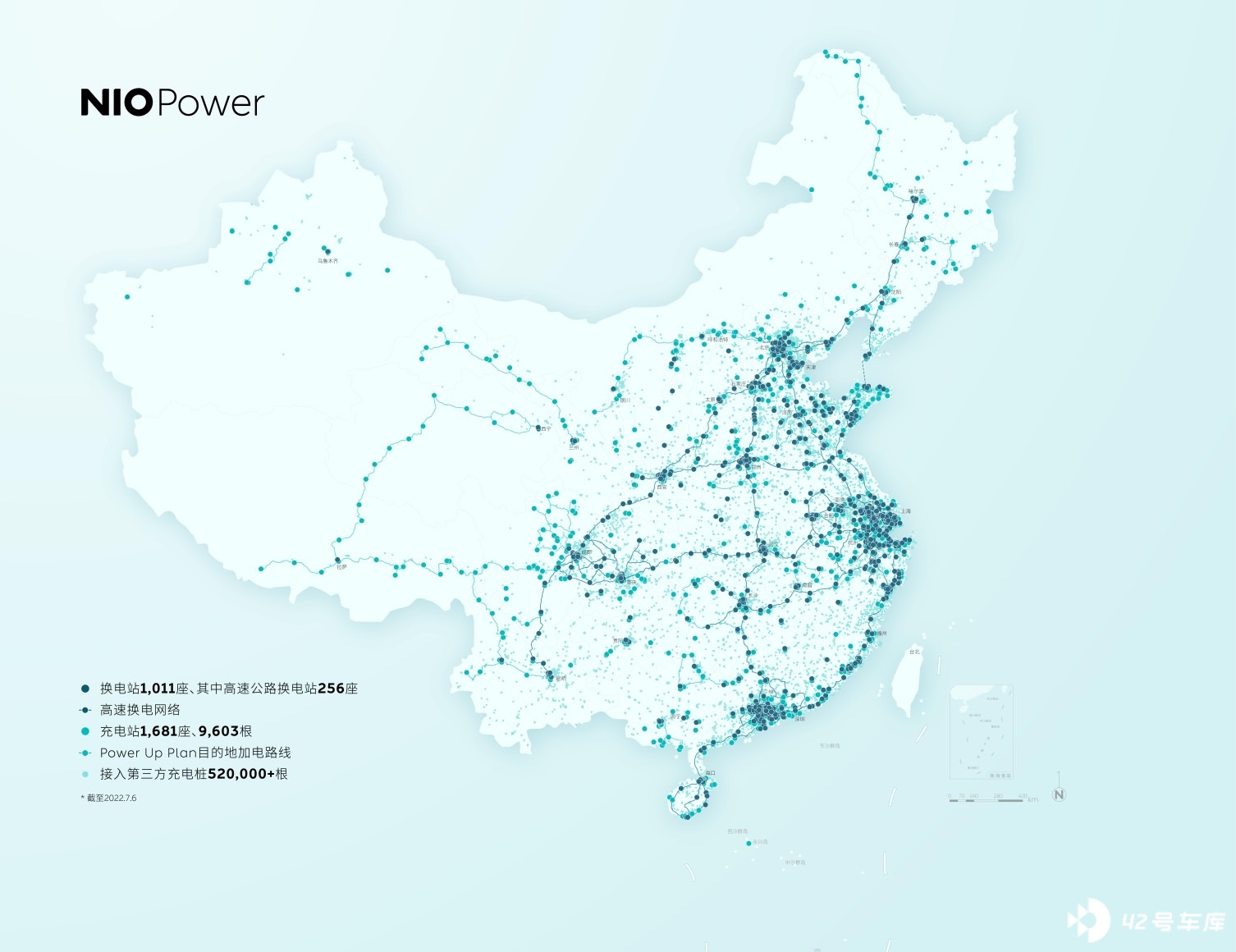
To better serve car owners and make efficient use of resources, NIO today showcased the NIO Power Cloud and launched the “Charging Journey” feature in the NIO App.
Finally, an additional product was announced at NIO Power Day 2022, the first being the NIO’s second-generation multi-functional mobile service vehicle, which has already been put into use.
The second product is the next-generation NIO ultra-fast charger, with a maximum power of 500 kW and a peak current of 650 A. Similar to Tesla’s supercharging station, it uses high-current technology. Deployment in both domestic and European markets will begin at the end of this year.
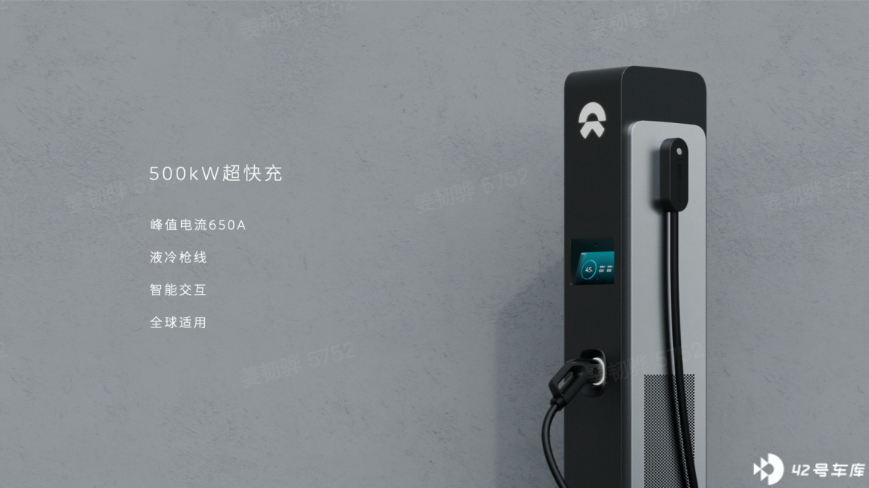
The third product is the third-generation battery swapping station and 800 V battery technology. It will begin deployment in the current or next year. As reported, development of the third-generation station is nearing completion with testing underway for demonstration sites. Compared with the second-generation station, the third-generation stations will have a greater capacity, higher efficiency, more flexible layouts, and will be compatible with a wider range of vehicle and battery types.
Quick review:With the passage of time, the ability boundary of NIO Power has been continuously expanded. Since 2019, the range of electric vehicles has gradually exceeded 500 kilometers, and in such a context, people’s anxiety is more focused on the “recharging” process.
At this stage, due to the restriction of electric vehicle charging speed, it’s hard for third-party charging pile brands to profit by selling electricity. Since it is impossible to achieve a commercial closed-loop, the business is naturally difficult to continue. Car companies are inevitably required to invest a large amount of funds in charging piles. However, if this can help car companies sell more cars, it is worth doing.
In the foreseeable future, both battery technology and charging speed are difficult to be drastically changed. Under the context where all manufacturers are transforming to electrification, the advantage of NIO Power will only become greater.
Finally, Qin Lihong also called for it during the communication meeting: “Although electric vehicles in the market compete with each other, they are still one family in terms of strategy. Only when the experience of all electric vehicle users is good, can this category of vehicles be good. We haven’t reached the stage where I have to step back, but we also call on all electric vehicle brands to invest in managing their own charging and swapping facilities, providing convenience to users, and urging all car brands with their own charging piles to open up their charging piles and provide services for electric vehicles of all brands.”
Huawei’s “Empowering”, when will WENJIE M7 be launched?
On July 6, 2022, WENJIE M7 was officially launched with a price range of RMB 3.198 million to 3.798 million. The length, width, and height of the WENJIE M7 body are 5,020 / 1,945 / 1,775 mm, and the wheelbase is 2,820 mm. It is positioned as a 6-seater mid-to-large SUV, which is comparable to the length of the ideal ONE, but the wheelbase is more than ten centimeters shorter.
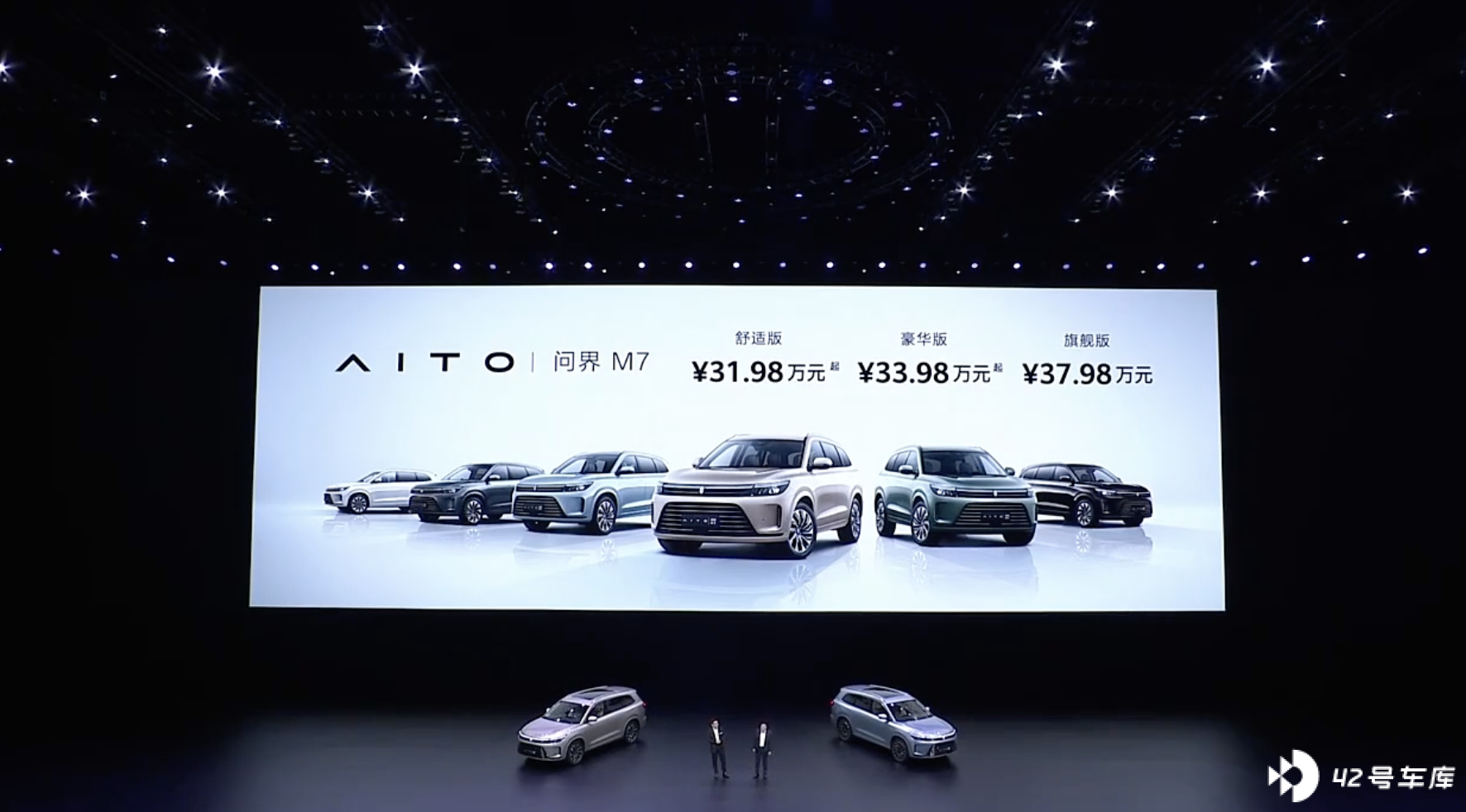 As an SUV with three rows of seats, the second and third rows are crucial for the WEY M7. According to Yu Chengdong, the second row of the WEY M7 is equipped with Zero Gravity seats, which can tilt the entire seat backward, lift one side of the seat cushion, and push it to automatically open. In addition, the third row of the WEY M7 can be adjusted up to 33 degrees.
As an SUV with three rows of seats, the second and third rows are crucial for the WEY M7. According to Yu Chengdong, the second row of the WEY M7 is equipped with Zero Gravity seats, which can tilt the entire seat backward, lift one side of the seat cushion, and push it to automatically open. In addition, the third row of the WEY M7 can be adjusted up to 33 degrees.
Of course, the biggest selling point of the M7 is still its Hongmeng cockpit. The car is equipped with a 15.6-inch 2K HDR center screen and a 10.4-inch instrument screen, both of which are visualized by the car’s operating system. The chip used is the Kirin 990A. Functionality such as voice-activated commands, continuous dialogue, and multi-tone areas are all basic abilities of the Hongmeng cockpit, which provides an experience on par with the Tesla Model Y.
In terms of power, the WEY M7 uses Huawei’s DriveONE pure electric drive-extended-range platform, consisting of a 40.06 kWh battery pack, a 1.5 T four-cylinder drive extender, and an electric motor. The rear-wheel-drive version is equipped with a 200 kW permanent magnet synchronous motor, which can achieve a pure electric range of 230 km under CLCT conditions and a comprehensive range of 1,220 km. The four-wheel-drive version adds a 130 kW front permanent magnet synchronous motor to the 200 kW rear motor. The pure electric range under CLTC conditions is 200 km, and the comprehensive range can reach 1,100 km.
Quick Comment:
Above, we analyzed the product strength of the WEY M7, which is difficult to say is extremely strong at this point in time, but it does have some highlights compared to ordinary gasoline cars. On this basis, the key factor for achieving the milestone of breaking 10,000 orders in two hours is Huawei. A very powerful data point comes from the WEY M5, in which the sales volume exceeded 7,000 units in June, and the number of orders in June exceeded 10,000. Regardless of whether you agree with the WEY M7 or not, the order volume is here, and the sales volume after massive delivery of the M7 in September will be the car’s most direct achievement.“`markdown
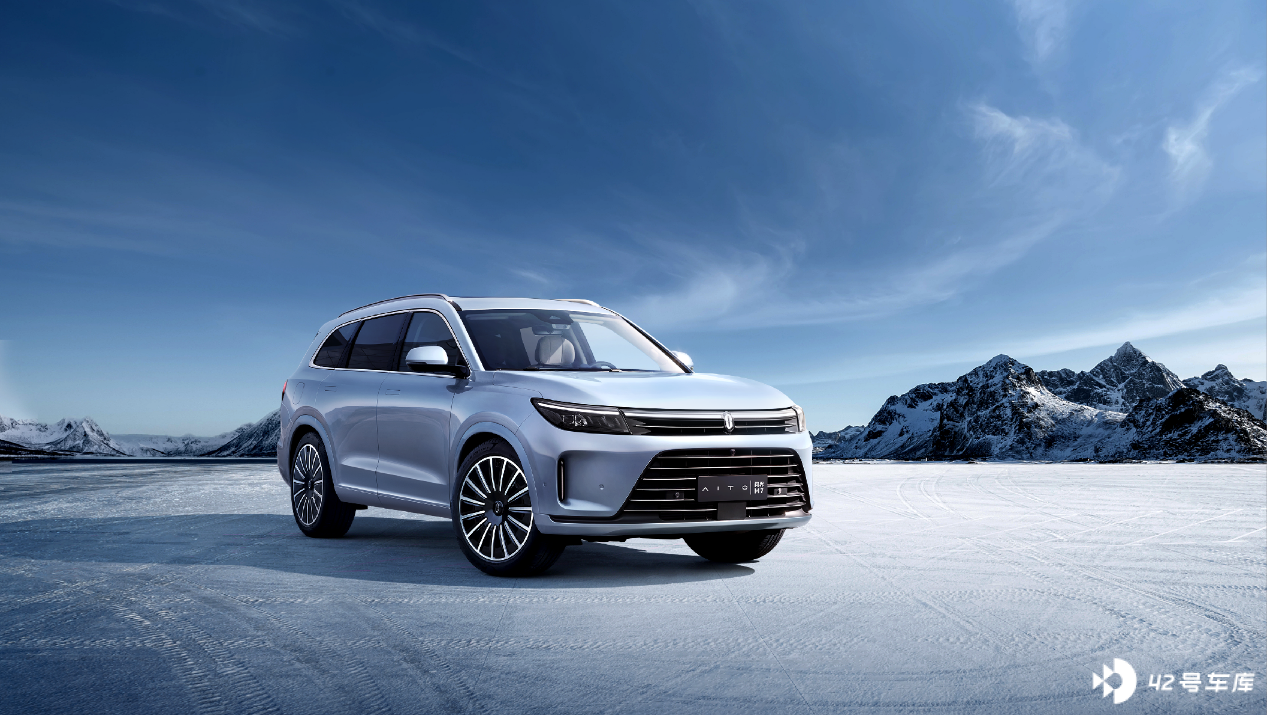
For the entire automotive industry, seeing such scenes brings more joy. Huawei’s huge traffic has ignited range extension, cabins, and autonomous driving. The large-scale popularization of range extension will allow more and more users to adapt to the electric life of charging, and the emergence of HarmonyOS cabins will not only educate users to adapt to the new era of automotive cabins, but also elevate the entire industry’s evaluation criteria for cabins to another level.
Huawei’s entry into the automotive industry through HI and the selective vehicle mode has already made a significant contribution to China’s automotive industry since 2022, even though it has claimed it will not manufacture cars.
Horizen J5 is twice as efficient as Orin
On July 7th, the 14th China Automotive Blue Book Forum (CABF2022) with the theme of “Refresh” was held at the China Vehicle Valley in Wuhan.
As the keynote speaker of the first-day main forum, the CEO and founder of Black Sesame Intelligence, Shan Jizhang, delivered a keynote speech titled “High Performance Chip Opens a New Era for Chinese Autos,” exploring how chips will “refresh” the pace of the automotive industry’s evolution. Shan Jizhang shared at the beginning of his speech: “I have a dream that I hope the core chip on China’s smart cars is made by Chinese companies.”
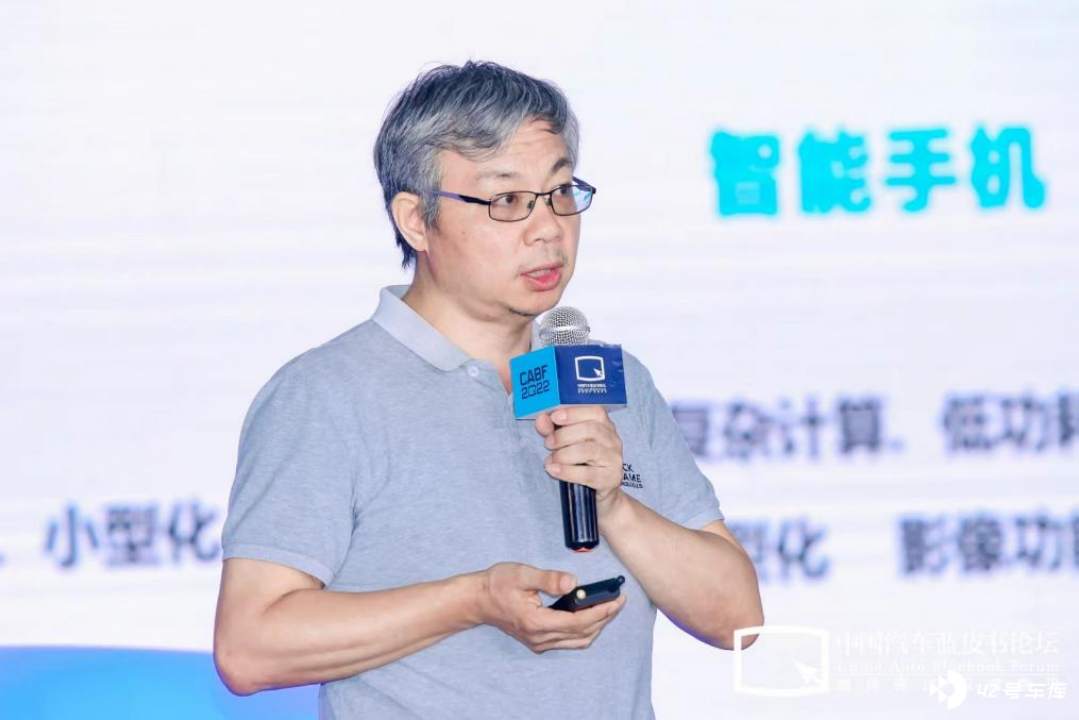
The new wave of smart cars, coupled with the rise of Chinese automakers, has created a fast development opportunity for local supply chain companies, including autonomous driving chips. Shan Jizhang specifically talked about the industry ecosystem and local supply chains: “We believe that the ecosystem is about everyone doing their best in order to do a good job. In the field of smart electric vehicles, China’s automobile companies are leading the world in development speed, and the local supply chain system is the key to supporting China’s independent brand automakers in rapid technology iteration.”
On July 8, Horizen’s founder and Chief Scientist, Yu Kai, also mentioned the watershed in Horizen’s development around 2020 in a solo talk in the morning, and once again called for the importance of constructing software ecosystem.

“`### Translation
Yu Kai said that in the highly difficult technological field of chips, Horizon needs differentiated thinking to be competitive. Therefore, achieving high-efficiency calculations with lower computing power means higher cost-effectiveness. Yu Kai gave the example of Orin and Horizon J5, which, although they cost less than Orin, can achieve similar or even better performance through neural networks.
Quick Comment:
In the process of developing towards intelligence and electrification, the global automotive industry is also undergoing changes, with Chinese companies entering the main arena one after another.
According to CleanTechnica’s statistics, global sales of new energy passenger vehicles totaled 3.21 million units in the first five months of 2022, including 1.9 million units in China, with a global market share of 59\%, surpassing Europe’s 820,000 units and North America’s 410,000 units. In the global top 20 new energy vehicle sales rankings for January to May 2022, 10 Chinese brands are on the list, occupying half of the market; and in the global top 20 sales rankings for new energy vehicle models, Chinese brands account for 70\%.
According to data from CITIC Securities, the penetration rate of advanced autonomous driving will reach 65.5\% by 2025, and the demand for intelligent driving chips in China’s automotive industry will reach 13.83 million units. In the next 3-5 years, intelligent driving will usher in a period of rapid development, and the automotive industry will face huge opportunities. The technical evolution of intelligent driving depends on the support of high-performance computing chips, and only by mastering the core IP can chips iterate quickly.
HiPhi Z Released
On July 5th, GH released the price range of the HiPhi Z online, which is between RMB 600,000 to 800,000, and the actual price and full configuration details will be announced at the Chengdu Auto Show in August this year. In addition, test drives for HiPhi Z also started on July 6th in 11 cities.

The length, width, and height of HiPhi Z are 5,036, 2,018, and 1,439 mm, respectively, with a wheelbase of 3,150 mm. The previous HiPhi X coupe SUV had a length, width, and height ratio of 5,200 mm, 2,062 mm, and 1,618 mm, respectively, with a wheelbase of 3,150 mm. It can be seen that there is a significant change in height, which is also in line with the positioning of a sedan, and the same wheelbase indicates that the Z and X should belong to the same platform.On the HiPhi Z, Gaohe (高合) carried over the HiPhi X’s iconic NT (nose-to-tail) exhibit wing doors, but due to vehicle height restrictions, the rear doors did not adopt the HiPhi X’s upper and lower split design.
In terms of the chassis, the HiPhi Z comes standard with all-aluminum front double-wishbone and rear five-link suspensions, in addition to air suspension, CDC, and rear-wheel steering. At the same time, the vehicle integrates CTP (cell to pack) technology, with a battery pack capacity of 120 kWh, which can provide a CLTC range of 705 km.
There are also many highlight configurations, firstly, the HiPhi Bot that supports automatic angle adjustment. Its mechanical structure is a mechanical bracket that supports eight-directional adjustment and four degrees of freedom. HiPhi Bot, as an interaction core, supports sound localization.
Secondly, in terms of assisted driving, on the perception hardware of the HiPhi Z, Gaohe kept up with mainstream configurations synchronously. There are a total of 32 sensors, and the computing platform is Orin-X, with one LiDAR.
Quick rating:
Gaohe’s second car is still a flagship, and Ding Lei did not take the market of relatively low-priced cars, as did NIO and Tesla, from the top down. Looking carefully, the upper limit of the HiPhi Z’s pricing range is the same as the HiPhi X, both being 80, but the lower limit is about 100,000 yuan higher. The pricing of Gaohe’s dual flagship is very coincidental. Why did Gaohe do this?
The reason is simple, Gaohe already has a considerable brand appeal in the real high-end pure electric vehicle market, and he found this to be a blue ocean. Otherwise, if you think about it carefully, who at this price point is a strong benchmark for Gaohe’s products?
Tesla’s Monthly Sales Record Is Broken Again
According to the sales data for June just released by the China Association of Automobile Manufacturers (CAAM), Tesla’s domestic deliveries reached a historical high of 77,938 vehicles, an increase of 177% year-on-year.Despite the severe challenges posed by the pandemic, the Shanghai Gigafactory rebounded and achieved record-breaking monthly sales after resuming production. The Model Y became the top-selling car in China with 52,557 deliveries in a single month, a staggering 2.5-fold increase over the previous year.
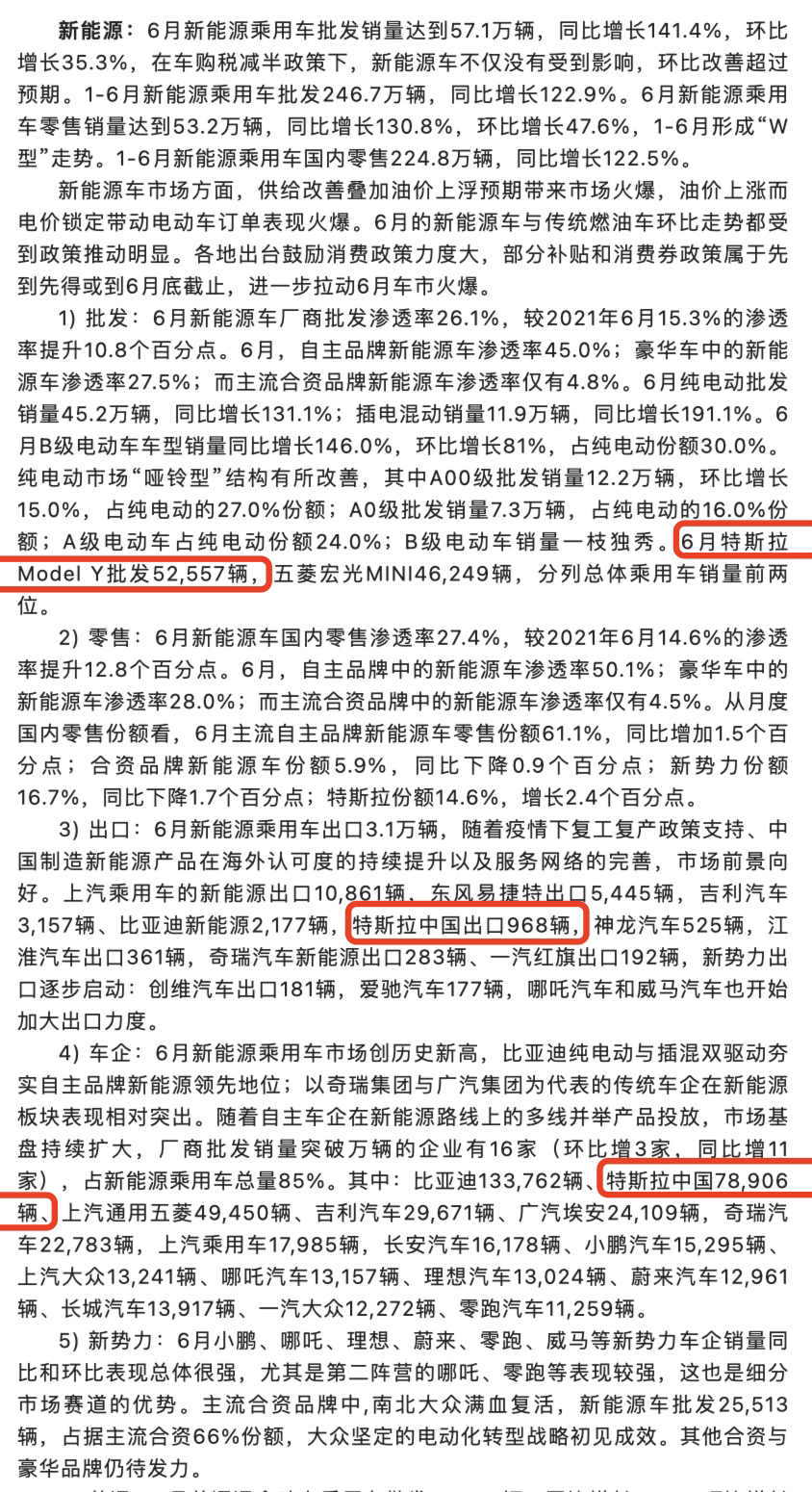
In the first half of 2022, Tesla’s Shanghai Gigafactory produced nearly 300,000 cars with over 60% of them already delivered, including close to 100,000 vehicles delivered overseas. Despite the dual pressure from the pandemic and the global industry crisis, Tesla delivered a total of 565,000 cars globally in the first half of 2022, a YoY increase of 46.3%.
Comment:
Tesla’s entry into China has further improved the ecosystem of the new energy industry chain. Currently, over 90% of Tesla’s parts are localized, and the company has established a “four-hour circle of friends” in the Yangtze River Delta. In addition, Tesla has opened up more than 300 electric vehicle-related technology patents.
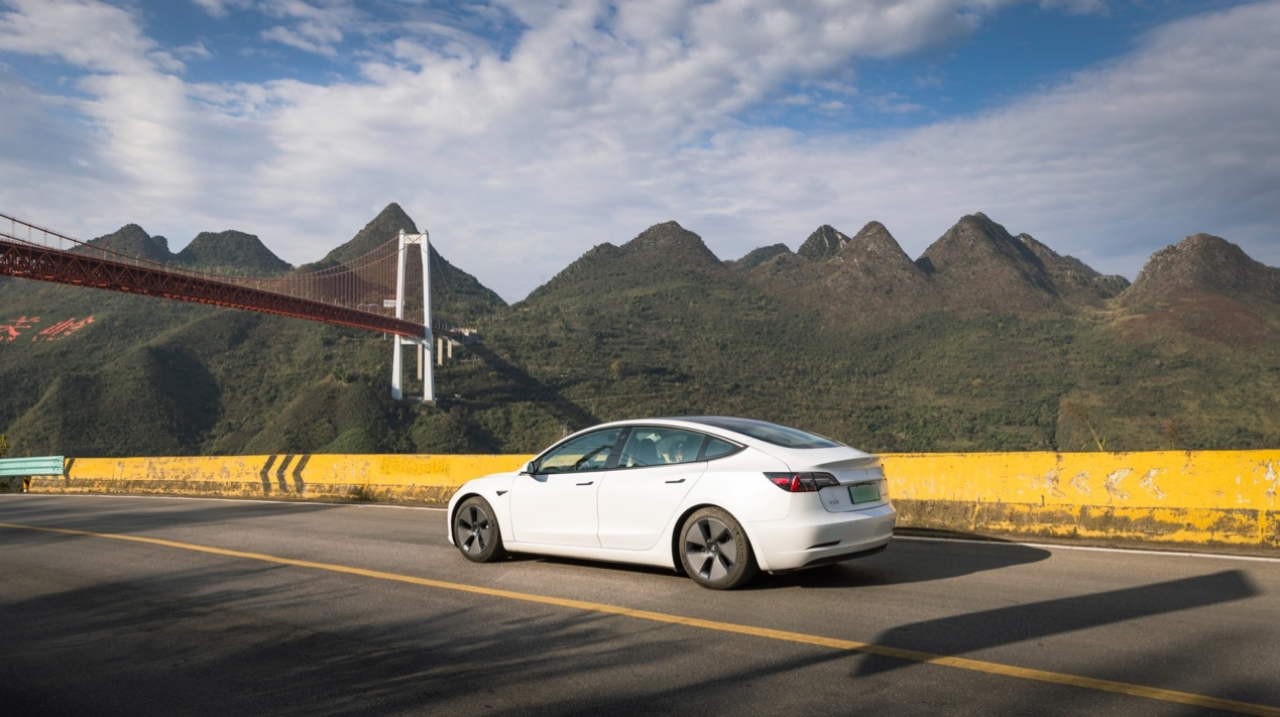
With the improvement of the supply chain, a large-scale industrial cluster of automotive parts companies has emerged. For example, in the Lingang New Area, spurred by the growth of Tesla, an automotive industry ecosystem has been built up, covering sectors such as automotive chips, autonomous driving systems, car interiors, bodies, new materials, and precision processing. It has become the first automobile industry cluster with an output value of over 100 billion yuan.
It is estimated that by 2025, the scale of the intelligent new energy vehicle industry in the Lingang New Area will exceed 300 billion yuan, making it a globally influential smart new energy automobile production center.
This article is a translation by ChatGPT of a Chinese report from 42HOW. If you have any questions about it, please email bd@42how.com.
